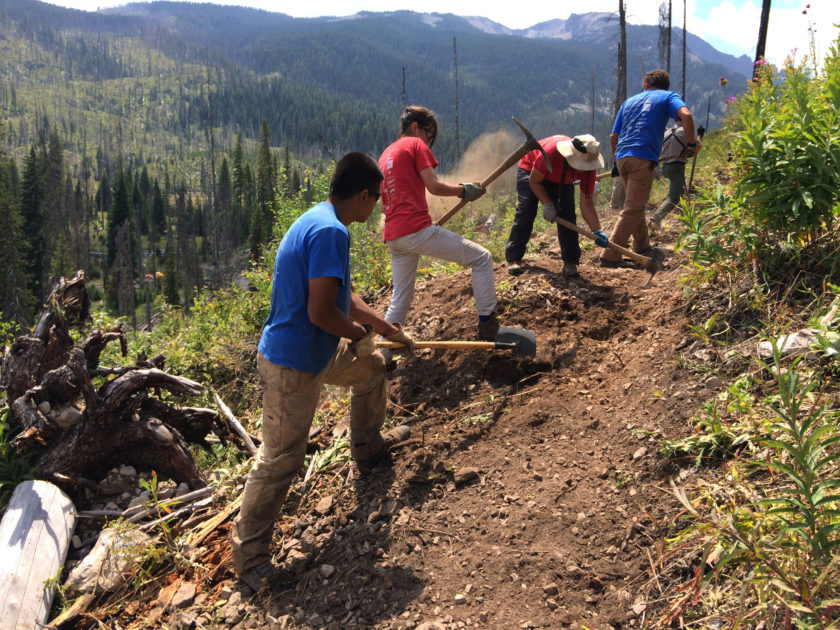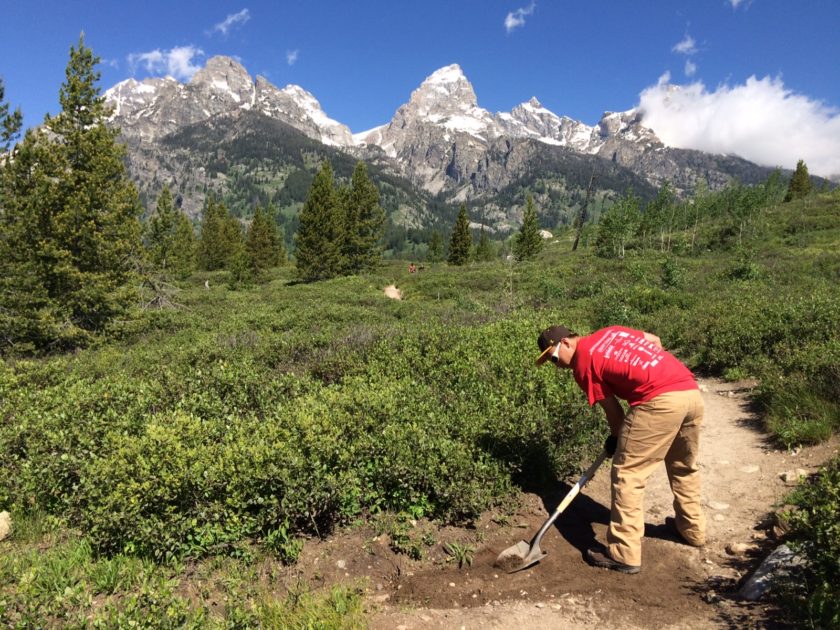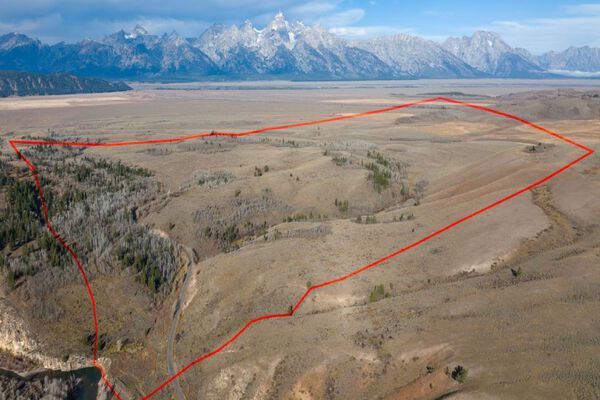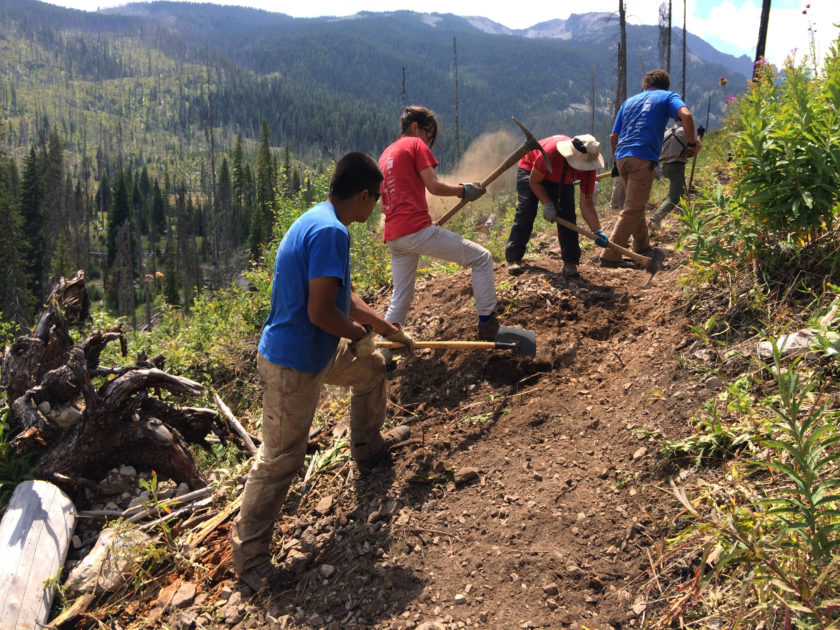Alex St.Clair is a former crew leader who spent 10 seasons building and maintaining the more than 300 miles of trail in Grand Teton National Park. In this series, he shares a glimpse of the hard work involved in trail construction and maintenance.
While many hike extensively throughout our national parks, not everyone knows what it takes to build a sustainable network of trails. Every step of the process focuses on one element: erosion. Usually caused by water, but also impacted by foot and horse traffic, erosion is the enemy of trail builders—commonly known as trail dawgs. So how do they do it? Here is a quick rundown on trail design and implementation.
First is deciding where the path will go. Steep slopes are often avoided for obvious reasons—it is preferred to contour hillsides and follow the path of least resistance. A slightly out-sloped bench dug from the earth is usually sufficient to shed water, depending on soil type and location. The bench is the actual tread hikers walk upon. The grade, or steepness, of a trail is also critical in managing run-off and erosion. Most grades stay below 20%, but this also depends on soil type and location. Keep in mind building sustainable trail in flat areas is equally as challenging. Flat areas can gather water on the tread and long puddles tend to form. This encourages users to deviate from the designated route and damage delicate vegetation.

The nitty-gritty part of trail work is digging new trail by creating a bench in a hillside. A willingness to work hard and get dirty are requirements for all trail dawgs.
Once the bench is carved out to the desired grade, it may be time to install structures. A perfectly graded and out-sloped footpath is by far the most enjoyable to walk and easiest to maintain; however, that’s not always possible. Most important is installing drains—somewhat unassuming and often unnoticeable structures that divert water from the tread. This is done by digging a shallow depression at a gentle angle in the trail to not only remove the water, but also to slow it down enough to drop any sediment it was carrying. This sediment can be recovered throughout the season and placed back on the tread. This is what most trail dawgs refer to as cleaning drains. You may also hear someone say they are going to punch-in a drain, which means they have identified a problem spot and are going to create a new structure. There are thousands upon thousands of drains in Grand Teton. Cyclical maintenance of these features is arguably the most important aspect of trail work.

A trail crew worker cleans drains on the Bradley-Taggart loop in Grand Teton National Park. Keeping drains clean is essential to protecting trails from erosion.
If terrain is simply too steep, it is necessary to install rock or timber structures such as water bars and retaining walls. This is when trail building becomes more complex and challenging. We will approach this in next month’s installation of On the Beaten Path!










